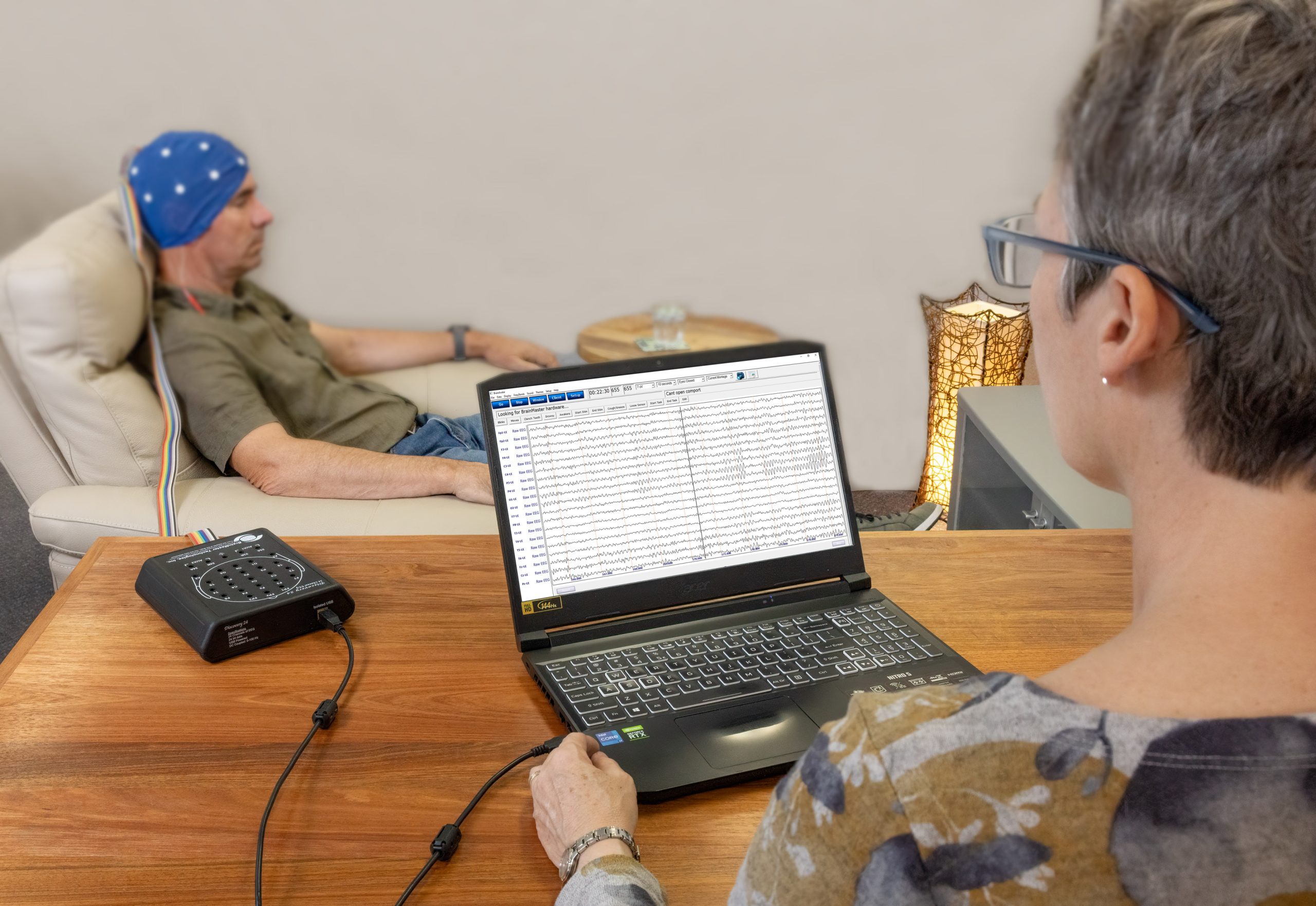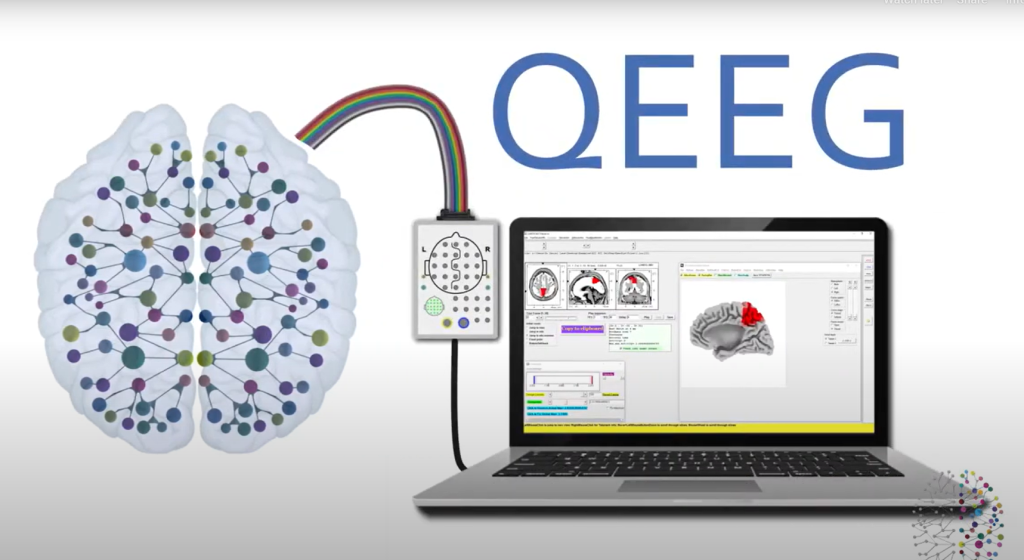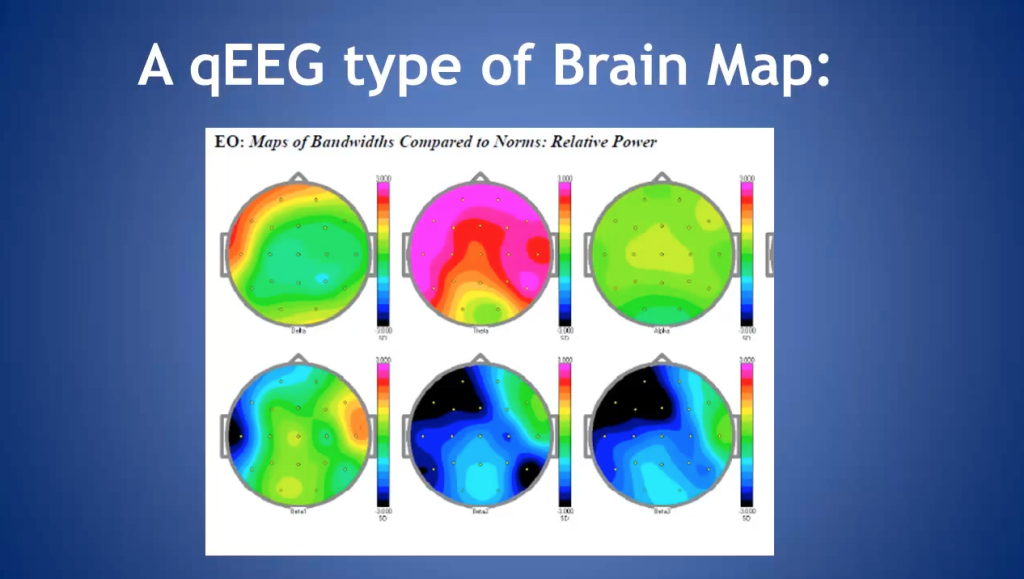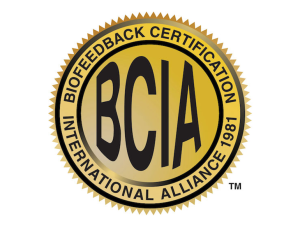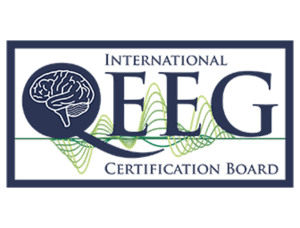QEEG Brain Maps
QEEG assessments (aka “Brain Maps”)
Quantitative EEG (QEEG) assessments provide information about brain function by measuring the brain’s electrical activity. They’re often referred to as Brain Maps. The results can be helpful in understanding individual strengths and weaknesses, and provide insight into why a person thinks, feels and acts the way they do.
When analysing QEEG results, comparisons can be made using large reference databases of other EEG recordings. Results can show how the person’s brain activity differs from typical activity. In some cases, patterns of brain activity can be identified which are associated with particular mental health conditions (i.e., “biomarkers”).

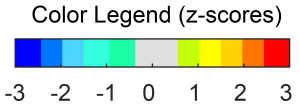
QEEGs play an important role in guiding and monitoring therapeutic interventions. At Southern Psychology & Neurotherapy, clients wishing to participate in neurofeedback training are strongly encouraged to undergo an initial QEEG. Subsequent QEEGs can also be performed, providing objective information about changes in brain function.
As with neurofeedback, QEEG is non‐invasive – the brain’s electrical activity is simply recorded at the scalp, with no electrical current directed into the brain. To measure brain activity, a stretchy fabric cap similar to a swim cap is used. The cap contains a number of sensors which record activity at 19 different locations on the head. The recorded brain activity can be used to generate brain maps which indicate the amount of electrical activity at each site, as well as other information about brain functioning.
QEEG brain scans explained
This short video (less than two minutes) provides a great introduction to QEEG brain maps.
With permission from the Perth Brain Centre.
Who can provide neurofeedback training and QEEG assessments?
Only qualified licenced health providers are able to purchase clinical grade neurofeedback equipment and provide neurofeedback training and QEEG assessments. While a number of relatively inexpensive home style neurofeedback devices are appearing on the market, these are not regulated. Compared with clinical neurofeedback systems, they provide very limited training options. In addition, neurofeedback training is a powerful intervention, and should only be provided by suitably trained and qualified professionals.
To become internationally certified in neurofeedback training and in QEEG assessment, extensive training, mentoring, and practice requirements need to be met. Sally is currently completing international certification requirements for neurofeedback through BCIA (Biofeedback Certification International Alliance) and for QEEG through IQCB (International QEEG Certification Board). She consults regularly with leading international and Australian neurofeedback and QEEG experts.
